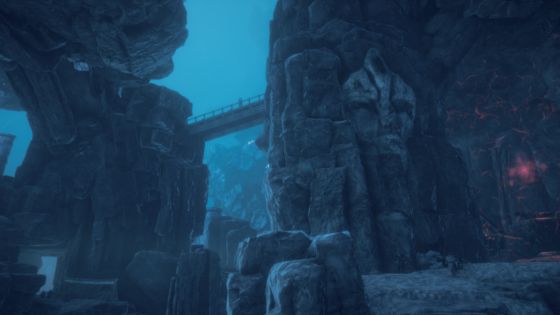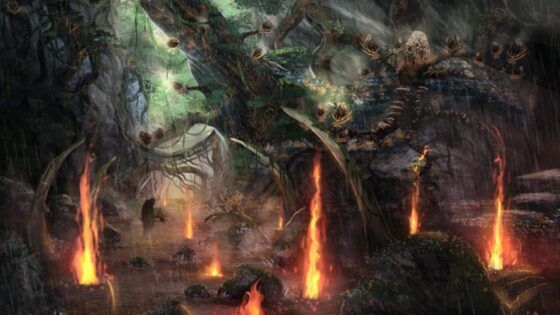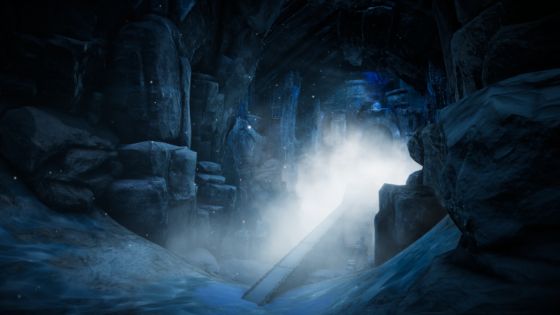Continuing our popular Pantheon: Rise of the Fallen content series, MMOGames once again reached out to the greatest “Fantheons” around. In this first dedicated guest post of the series, PantheonPlus share some of their views on what makes Pantheon’s Climates system so appealing and ground-breaking.
When you think of hazards and dangers on our own planet, what do you think of? Do you think of volcanos, frigid ice peaks, and deep dark caves filled with the unknown? These environments are synonymous with not just danger, but adventure and exploration as well. Deep diving into the unknown presents a thrill in our real lives that is often unmatched, and results in us jumping from airplanes, climbing to perilous heights, and squeezing through narrow rocks just to see what is on the other side.
So, if this is what drives exploration, a sense of danger and the unknown, why is it that our MMORPGs don’t often mimic this curiosity? This is one of the many reasons I have been so enamored with the concept of Climates in Visionary Realms’ upcoming MMORPG, “Pantheon: Rise of the Fallen”.

To begin, here is a quote from the Creative Director of Pantheon, Chris “Joppa” Perkins:
“You may have heard us say something like, ‘We’re going to put the ‘E’ back in PvE’ during a stream or interview. Great catch phrase, but what matters is making that true. That’s what design is all about—taking a high-level idea or goal and working out the lower-level details of how it will actually be experienced as true to the players… We want you to FEEL the snow-covered and frost-chapped lands, the bitter cold, and the breath moving across your character’s frigid lips. The more we can make you feel like you are there, the more successful this system will be—the more immersive the environment has become.”
As MMORPG fans, it has been engrained into our heads that when the term PvE comes up, we do not first think of climates. Instead, we typically think of the NPC characters we come across within our journeys. We think of dragons descending with waves of fire and ice. We think of underhanded villains casting terror on villagers incapable of defending themselves. We rarely think about combating the world itself.
For those unfamiliar with the lore of Terminus, it is a planet devastated from planar collisions, relentless war, and the placement of otherworldly races holding onto survival after their home planets were erased from existence. In a world so thrust into chaos, it allows for interesting and wild design choices in which climates can arise from the planet’s constant state of flux. It will not just be the inhabitants that we, as players, will need to be concerned with but also the fact that we could be devoured by this vengeful and often unforgiving world.

Players will face off against 6 different severe climates across Terminus.
Scorching – a climate which will put players into almost unbearable heat, with temperatures volatile enough to parch surfaces and even burn their flesh.
Frigid – opposite of scorching, this climate is so intensely cold that one’s heartbeat could stop if too much time is spent without mitigation. This intense cold results in extraordinarily little precipitation and can combine with blistering winds.
Windshear – areas full of sudden forceful wind speed, which results in chaotically changing wind directions causing temperature inversions or density gradients. Winds so powerful that players could be sent through the air wildly, possibly even creating tornados.
Anaerobic – climates which present an absence of free oxygen, in which most living creatures cannot sustain life.
Toxic – a climate which can bring any adventurer to their knees, becoming ill, nauseous, or dizzy from the poisonous and harmful chemicals within the area.
Pressure – intense atmospheric pressure which can cause one’s own tissue to accelerate inward against the liquids and solids of their body, forcing the air from their lungs until there is none remaining; a sensation akin to the feeling of your body being punctured from every direction.
Each of these dangerous climates will have five different tiers of potency for players to deal with. As a climate becomes more volatile, the effects they will have on the players themselves will grow exponentially in danger. Each climate will consist of various dangerous effects. To provide an example, let us dig further into what we know about the Frigid climate, but first another important quote from Chris “Joppa” Perkins,
“An Extreme Climate’s core detriment is the effect that will apply to all players immediately upon entering the climate area. The core detriment will typically consist of several layered effects which can be mitigated by increasing the Acclimation score towards that specific climate. The Frigid climate’s core detriment is called Glacial Pace.”

Glacial Pace – Upon entering any frigid area, the player will be subject to a decreased movement speed, decreased attack speed, increased casting time, and an increased cooldown time on abilities.
Frozen Lungs – Spending too much time in a frigid climate can result in players suffering from this sporadic detriment. Players will take a jolt of damage losing health based on the tier of the climate. Endurance will also drain until emptied and will not generate by natural means until frozen lungs is no longer in effect.
Frostbite – Another dangerous effect of staying within frigid climate for too long is Frostbite. Adding to a constant tick of damage, this detriment puts a counter on the player over time while staying in the area. If a player receives five stacks of this effect, the player will be unable to engage in melee or ranged attacks, and spellcasting will become disabled. Frostbite counters are more likely to be applied at a faster pace within higher tier frigid climates.
Hypothermia – This devastating detriment can only apply to a player once one of the other sporadic detriments are applied. The player takes further ticking damage, losing health at a strong pace until the player is dead or hypothermia is cured.
Imagine fighting a wickedly powerful ice dragon in the peaks of a mountain-range, blinded by snow and hindered by the cold. Climates add to the danger of the world while enhancing encounter situations we are already familiar with. This engulfs players in a level of depth that sets Pantheon apart from many of the MMORPGs on the market and in development.
This system also adds a horizontal path of progression in which players can acclimate themselves through these dangerous climates with gear, glyphs imbued into the parts of the player’s body, and even natural acclimation which can be built up by spending significant time in these climates. It will also create important choices as players will not only be faced with combating just one climate, but at times may be faced with two stacked within one area. Which climate do you acclimate with to protect yourself? Which climate do you deal with the side-effects for? These are all decisions that will be made depending on your playstyle, and the party in which you are grouping.
While, from a distance, many will see Pantheon as a throwback to the MMORPGs of the olden days, this project is anything but “old.” It takes the challenges and social experiences we value from games like EverQuest, Classic WoW, and Final Fantasy XI and does not just look to copy, but instead evolve these core values. Climates are not only one of these signature twists which, as Joppa stated, “Puts the “E” back in PvE” but one that will be extremely impactful to the journey we hope to experience within Terminus.
PantheonPlus is a super highly regarded source of info on everything Pantheon. Their content creators are some of the foremost experts on the exciting upcoming MMORPG (and others). Their excellent content can be found on their website, Twitch, YouTube channel and Twitter. So, if this article has whetted your Pantheon appetite, go and check out those channels.